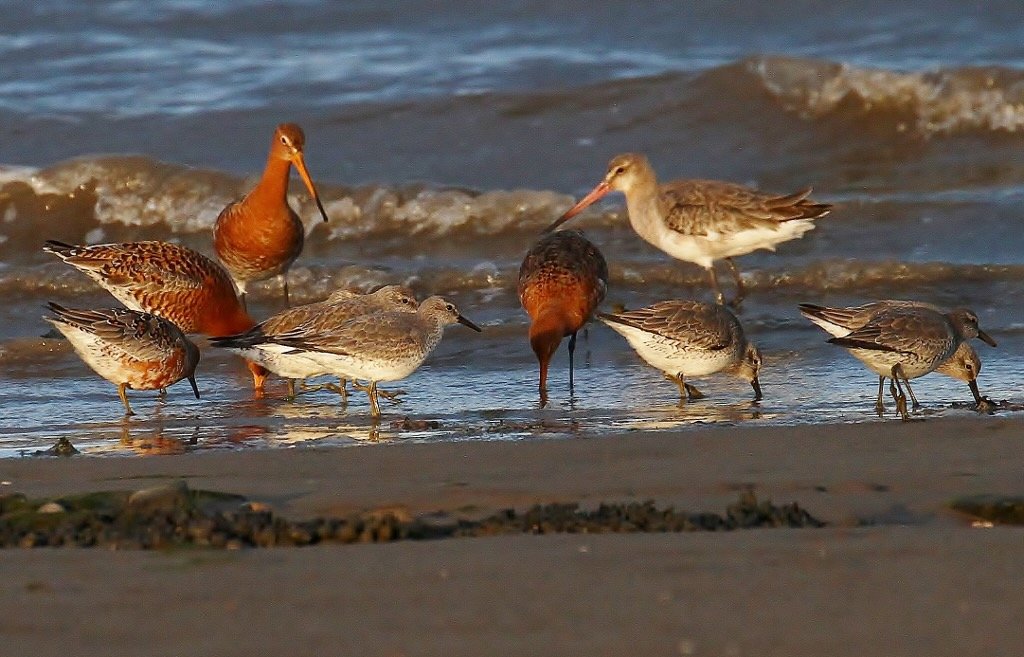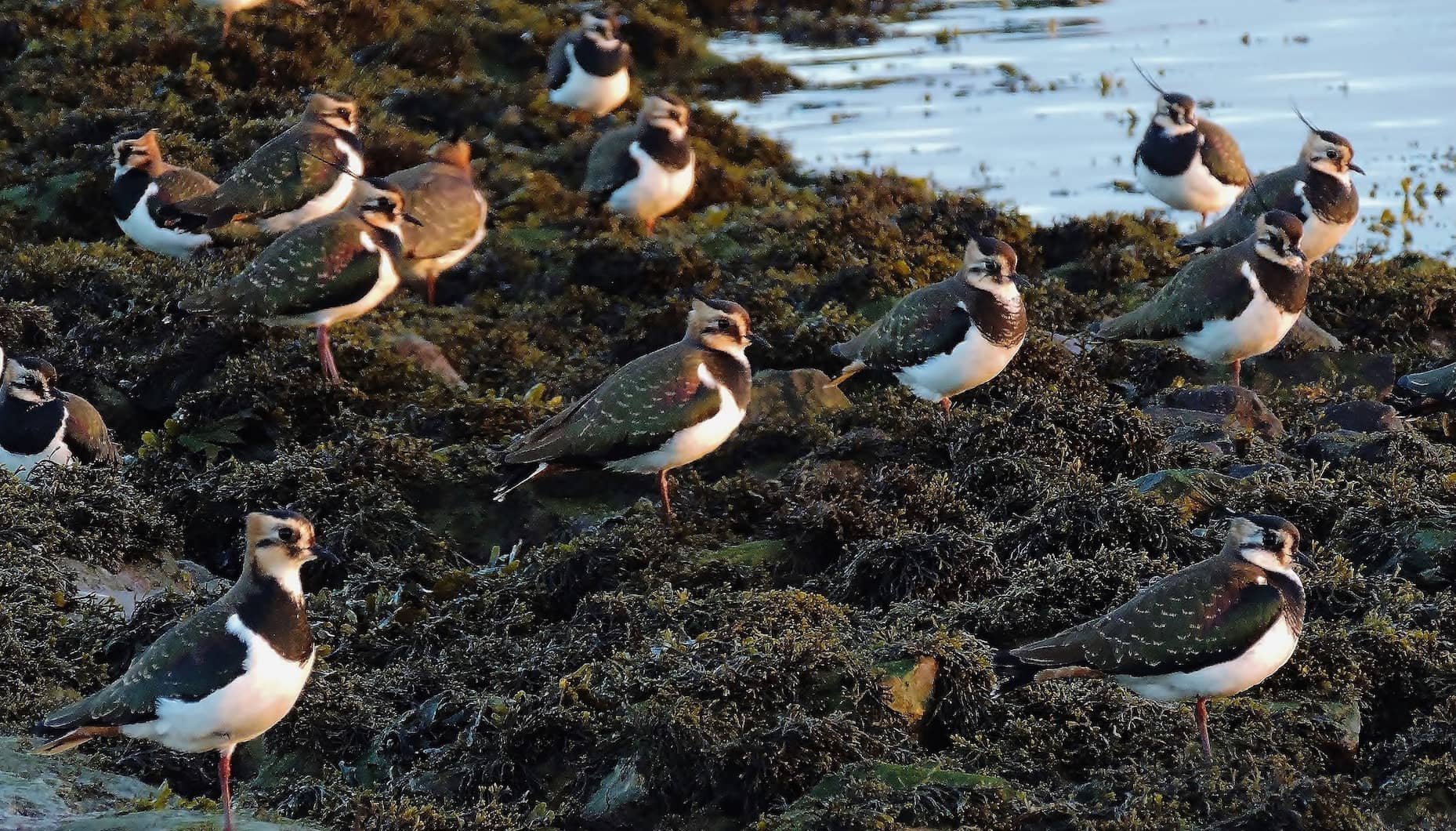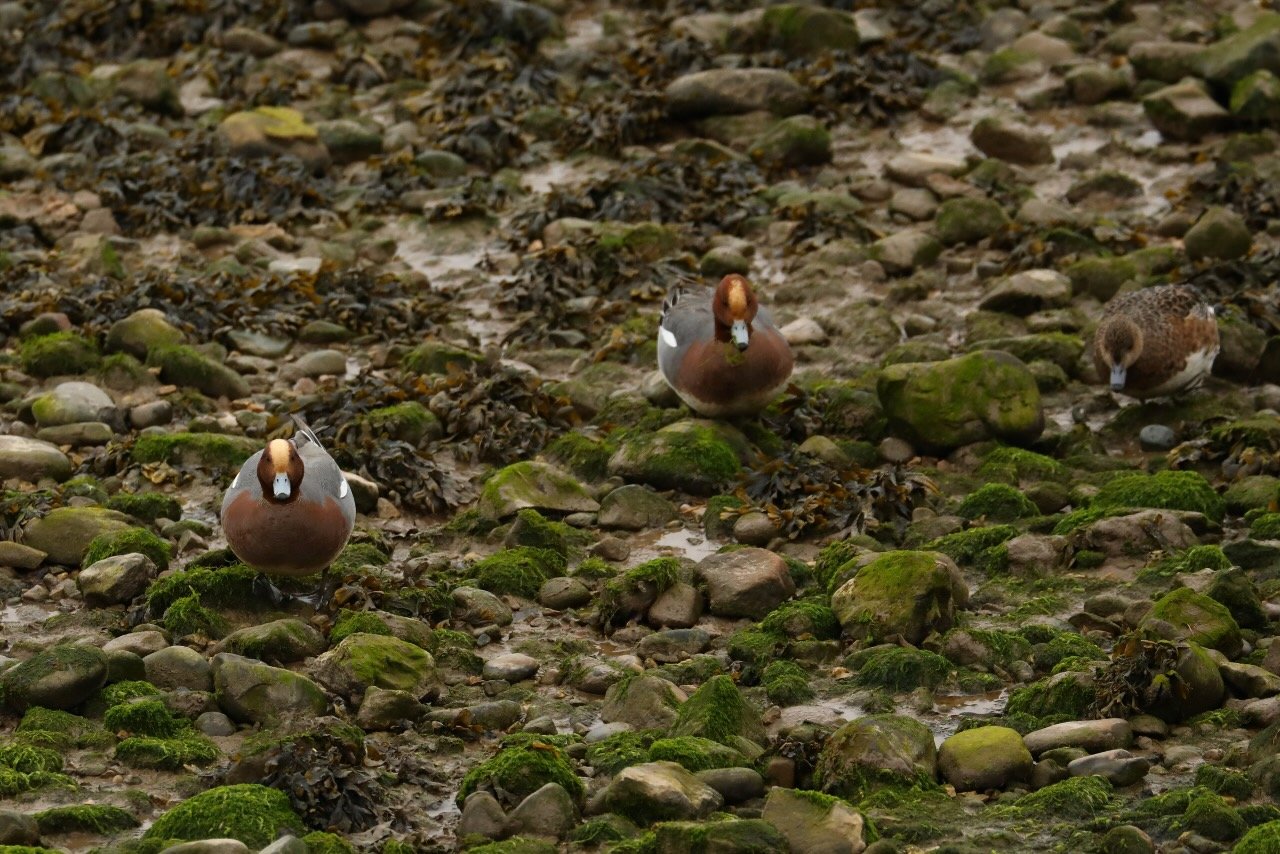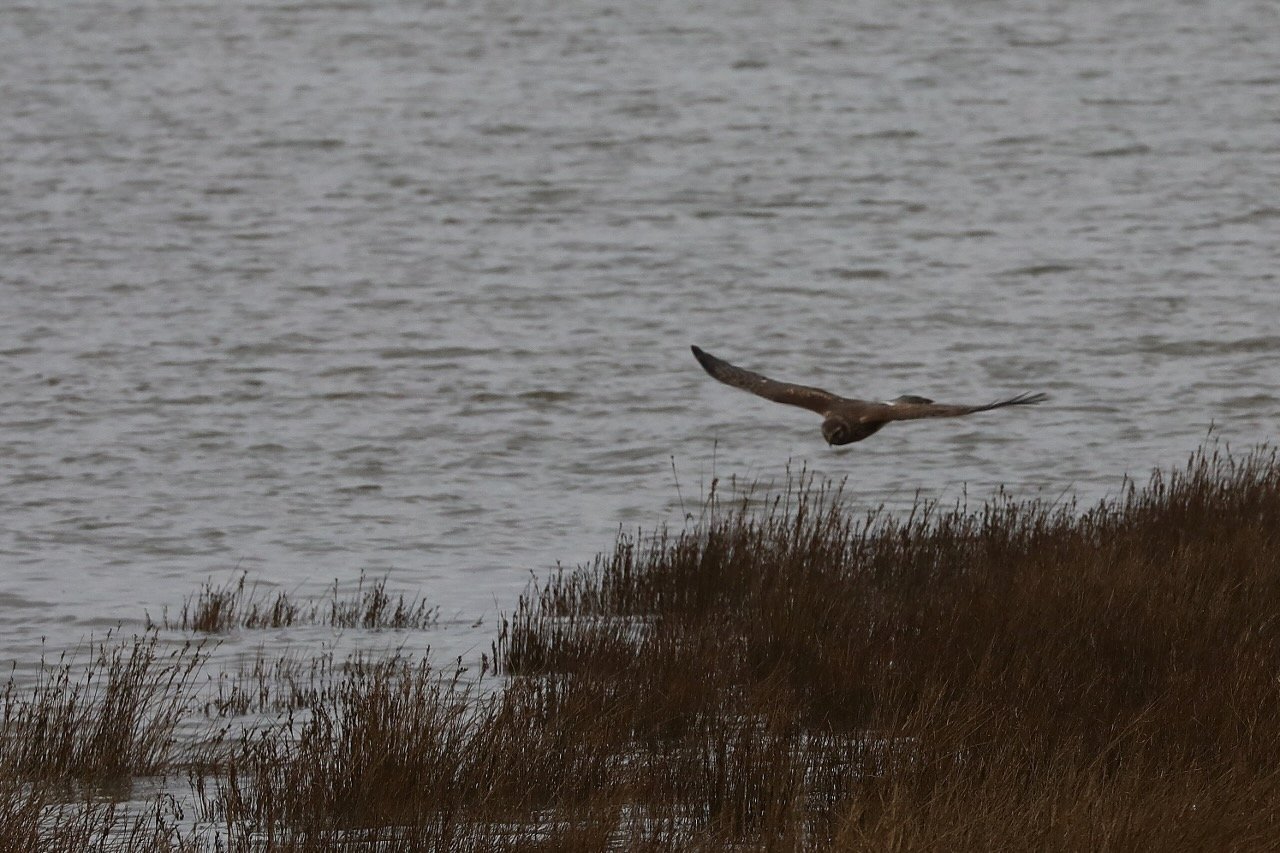A Winter Review
The rare Glossy Ibis seen on Middleton Floodplain devouring a large earthworm: Photo Alan Smith
As winter starts to draw to a close and spring is in the air, and I do appreciate that mother nature can have a sting in her tail such as ‘The Beast from The East’, we can still hopefully start to look forward to some better weather. I think we are all absolutely fed up with the constant rain, but there is a price to be paid for relatively mild winters and we are the first landfall for rain after being collected crossing the Atlantic.
In some respects, the bird life on the estuary here at Sunderland Point has not been as good as other years, namely the absence in large numbers of both species of Godwit, Black Tailed and Bar Tailed. We have had small numbers of Black Tailed off and on, but only individuals regarding the Bar Tailed, in the previous past winters both species numbers have seen 2,000 feeding and roosting on the east side of Sunderland Point.
Bar Tailed Godwit (left) feeding with two Black Tailed Godwit. Bar Tailed Godwit are smaller with a slightly upturned beak: Photo Alan Smith
The Black Tailed Godwit has been - and still is present - on the estuary only a very short distance away on the mud flats at the estuary of the River Conder near Glasson Dock, numbers there are in excess of 4,000, why should this be? Perhaps the abundance of food and good safe roosting is ideal for them when the tide covers the feeding area. The small visiting numbers here observed during feeding did not indicate any shortage of food, but the pantry is obviously a little fuller a short distance away.
Black Tailed Godwit in chestnut red breeding plumage with Knot: Photo Alan Smith
This year the Bar Tailed Godwit appears to have favoured the west side of Sunderland Point where it will be feeding far out at the tide edge along with the vast numbers of Knot, Dunlin, Curlew, and Oyster Catcher. All of these species, and with others, form the spectacular wader roost on the west shore marsh when the tide is in.
Golden Plover have been good with up to 1,800 birds observed on the Glasson sand bank along with 4,500 Lapwing. (Golden Plover and Lapwing can spend a lot of time in each other’s company) One of the other names for Lapwing is Green Plover along with Peewit and Tewit, the other Plover we have is the Grey, mainly found along with the west side gang.
Lapwing also known as Green Plover: Photo Alan Smith
Wildfowl has been excellent with massive numbers of Wigeon present, now all paired up in readiness for breeding when they leave us for faraway places above the Arctic Circle. Pink Footed Geese have been seen flying over on a regular basis and dropping in to feed on Glasson Marsh - estimated numbers in the Fylde area c30,000.
Wigeon eating ‘green slark’ (local name for a type of seaweed, but the word slark could be either Gaelic or Norse in origin): Photo Alan Smith
A rare visitor to our shores but gaining in numbers elsewhere throughout the UK and now breeding, was a Great White Egret which came in to land on the Town Skear on July 27th last year; it joined a Little Egret and a Heron, a very welcome sight indeed and one that we will see more of in the future. In the photo below I think the Heron is trying to fathom out who its big cousin is.
Great White Egret with two Little Egrets and a Heron on Town Skear: Photo Alan Smith
I am also going to include in the rarities a visitor to the Middleton floodplain which was a Glossy Ibis. This magnificent bird with its iridescent plumage stayed for quite some time feeding on an abundance of worms, again numbers increasing throughout the UK, now a resident whereupon it used to winter in Africa.
Glossy Ibis on the Middleton Flood Plain: Photo Alan Smith
Another bird that has visited us this winter was the Hen Harrier, a sometime winter visitor probably from the Trough of Bowland, it was hawking the rushes on the West Shore looking for voles alas I never saw it catch one, an hour before the Harrier a Barn Owl was doing the same, both flew in from the north.
Hen Harrier hunting on the West Shore: Photo Alan Smith
The magnificent Barn Owl in flight: Photo Alan Smith
You never know what might visit to add interest to our incredible wildlife spectacle.








